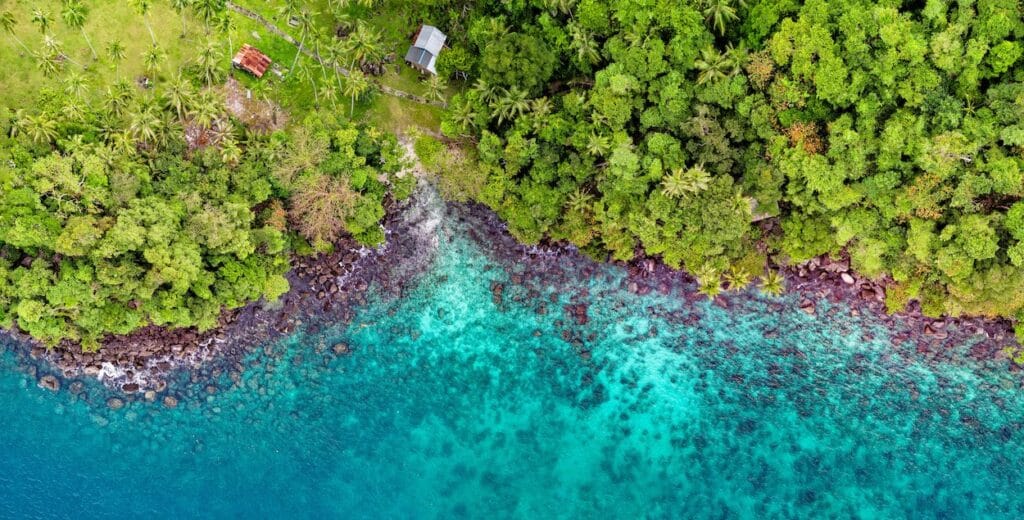
Introduction
Tubbataha Reefs Natural Park, nestled in the heart of the Sulu Sea in the Philippines, stands as a testament to nature’s underwater artistry.
This UNESCO World Heritage site encompasses two main atolls—the North and South Atolls—and the smaller Jessie Beazley Reef, covering approximately 97,030 hectares.
Its remote location and protected status have preserved a vibrant marine ecosystem, making it a coveted destination for divers worldwide.
A Brief Overview of Tubbataha Reefs
Established as a marine sanctuary in 1988 and later designated a UNESCO World Heritage site in 1993, Tubbataha Reefs Natural Park is celebrated for its exceptional biodiversity.
The park is home to over 600 species of fish, 360 species of coral, 11 species of sharks, and 13 species of dolphins and whales. Notably, it serves as a nesting ground for endangered hawksbill and green sea turtles.
Diving Seasons and Conditions
The diving season in Tubbataha is relatively short, spanning from mid-March to mid-June. During this period, the seas are calm, visibility ranges from 30 to 45 meters, and water temperatures hover between 27°C to 30°C, offering optimal diving conditions. Outside of these months, rough sea conditions make the area inaccessible.
Top Dive Sites in Tubbataha
- Amos Rock (Southwest Rock): Renowned for its steep walls adorned with gorgonian fans and soft corals, Amos Rock is a hotspot for large pelagic species. Divers frequently encounter schools of jacks, snappers, and the occasional hammerhead shark. Blue Water Dive Travel
- Shark Airport: Despite its intriguing name, Shark Airport is a relatively flat reef known for frequent shark sightings, including whitetip and grey reef sharks. It’s also a nesting site for sea turtles, making it a diverse diving experience. Blue Water Dive Travel
- Delsan Wreck:This site features the remnants of a small shipwreck, attracting a plethora of marine life. Divers can expect to see barracudas, trevallies, and occasionally tiger sharks patrolling the area.
- Black Rock: Characterized by its coral-covered slopes and walls, Black Rock is teeming with macro life, including nudibranchs and pygmy seahorses, alongside larger visitors like manta rays and sharks.
- Seafan Alley: True to its name, this site boasts an abundance of large gorgonian sea fans. The strong currents here attract pelagic species, making it a thrilling dive spot. Blue Water Dive Travel
Marine Biodiversity
Tubbataha’s isolation has allowed it to become a sanctuary for a vast array of marine species. Divers can encounter everything from tiny pygmy seahorses clinging to sea fans to majestic whale sharks cruising the open waters.
The reefs are in pristine condition, showcasing a kaleidoscope of hard and soft corals that serve as the foundation for this underwater ecosystem.
Conservation Efforts
The Tubbataha Management Office (TMO) oversees the preservation of the park, implementing strict regulations to protect its delicate environment. Diving is only permitted during the designated season, and all activities are conducted under a “no-take” policy, ensuring that the natural beauty remains unspoiled for future generations.
Getting There
Access to Tubbataha is exclusively via liveaboard vessels departing from Puerto Princesa, Palawan. The journey to the reefs typically takes 10 to 12 hours. Most liveaboard trips last between 5 to 7 days, providing ample time to explore the diverse dive sites within the park.
Recommendations
While Tubbataha offers sites suitable for various skill levels, it’s recommended that divers have at least an intermediate level of experience due to potential strong currents and the remote nature of the location.
Ensuring good buoyancy control and familiarity with drift diving techniques will enhance the experience.
Conclusion
Diving in Tubbataha Reefs Natural Park is a once-in-a-lifetime experience, offering unparalleled biodiversity and pristine underwater landscapes. Its status as a UNESCO World Heritage site underscores its global ecological significance.
For those seeking adventure and a deep connection with nature, Tubbataha stands as a beacon among the world’s top diving destinations.
